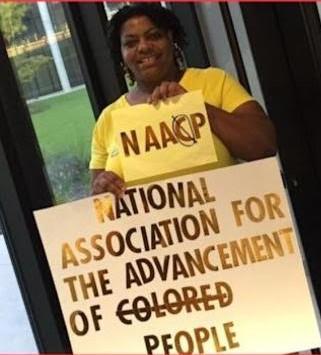Delia Gray, a 47-year-old mother of two and grandmother of two who hails from Tyler, Texas, is on a “one-woman crusade” to have the National Association for the Advancement of Colored People drop the “C” from NAACP.

Delia Gray holds her handmade sign, as part of her five-year "one-woman crusade" to get the National Association for the Advancement of Colored People to remove the "C" from the organization's name. Courtesy of Delia Gray





